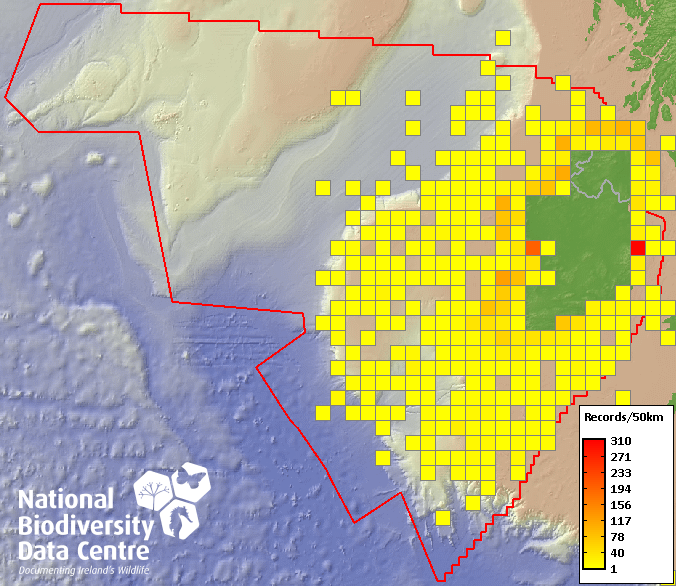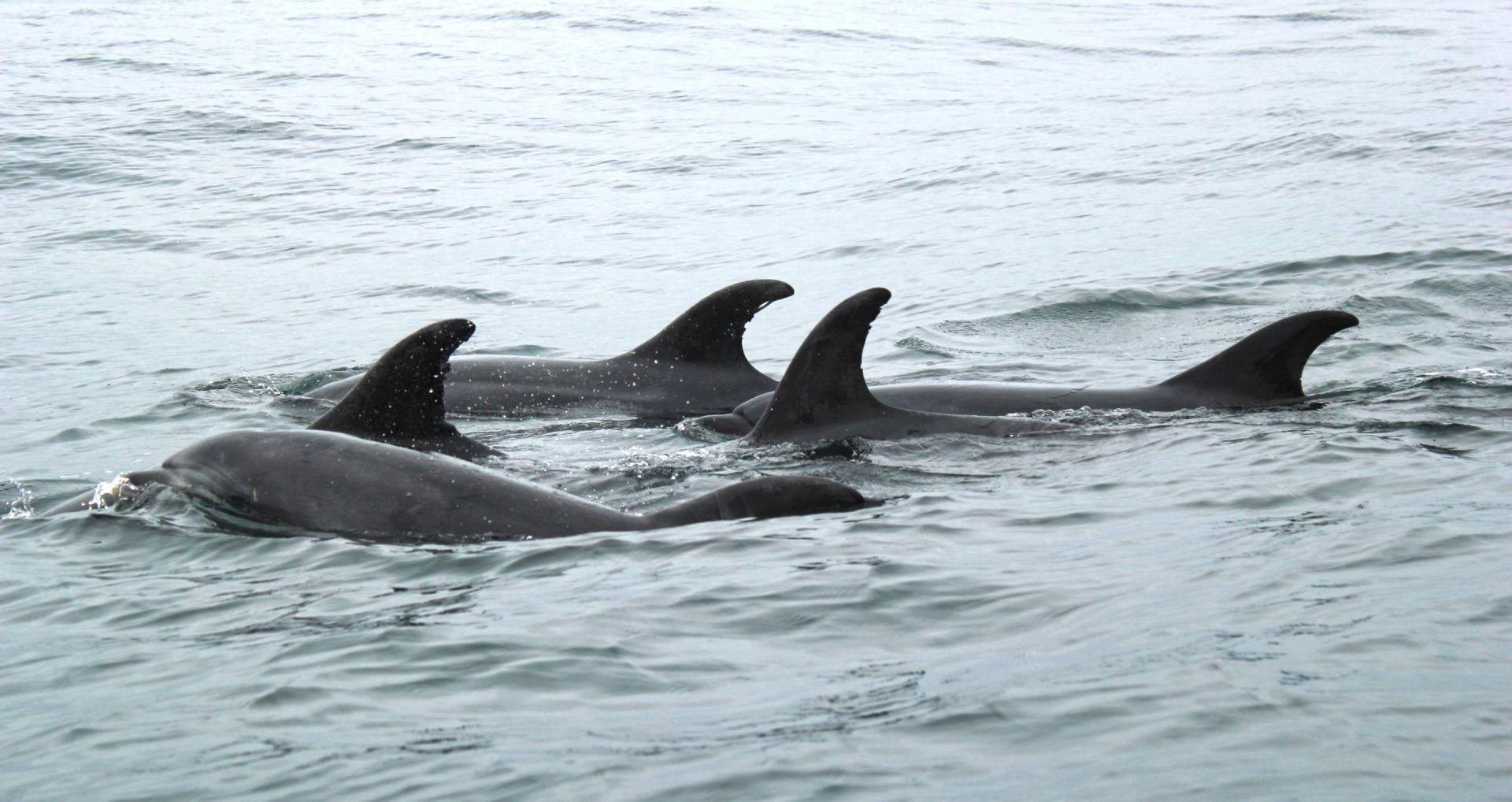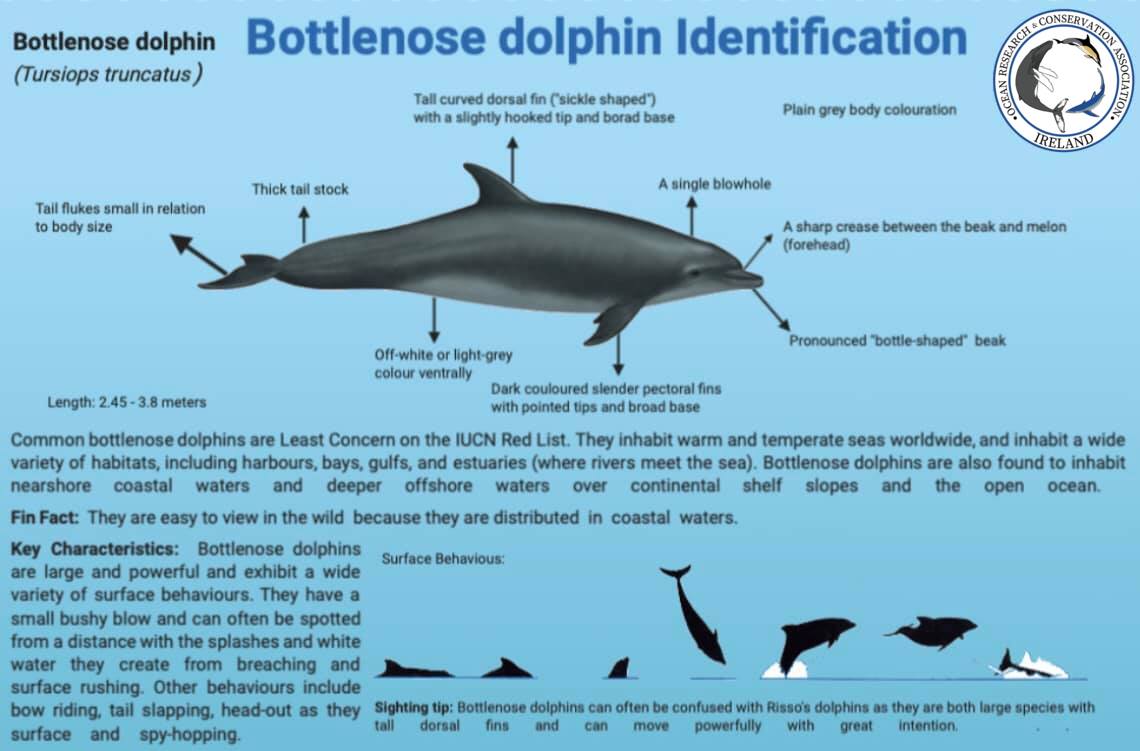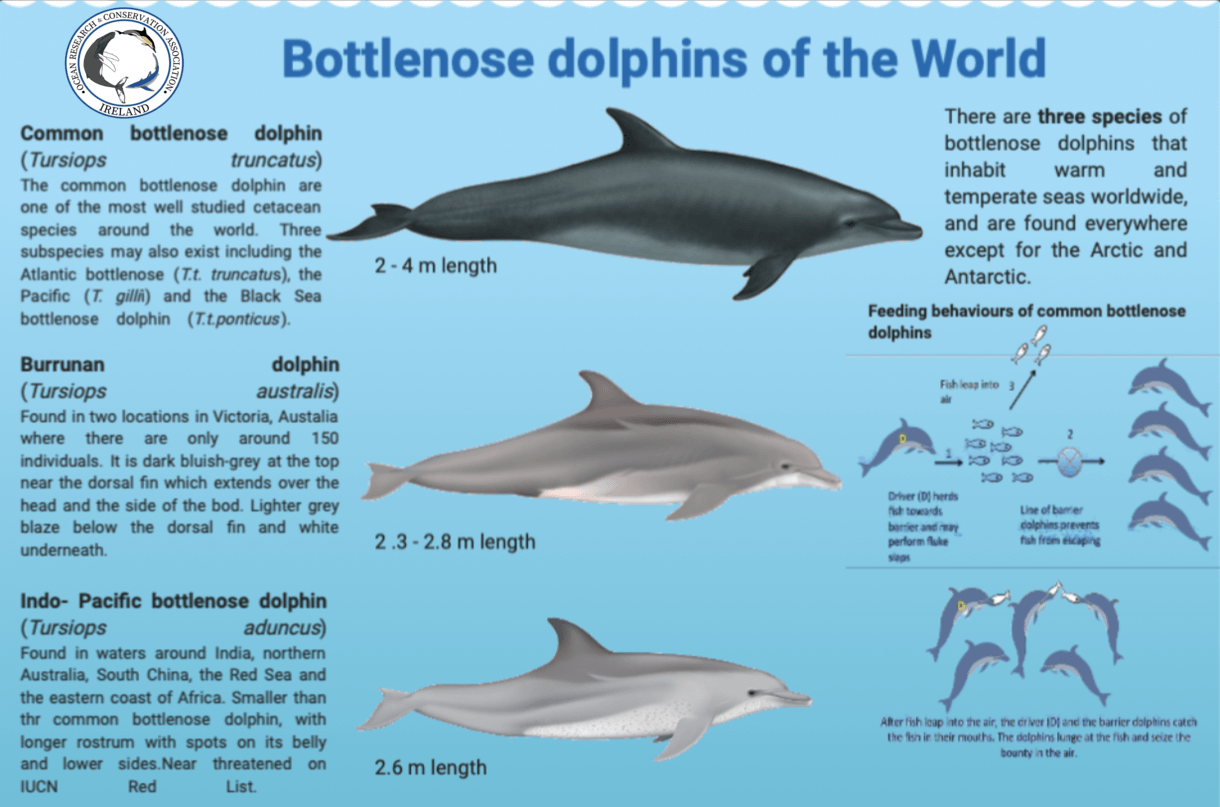
Behaviour:
Bottlenose dolphins have a varied repertoire of surface and vocal behaviours. In 2014 - 2016, Dr. Isabel Baker developed the first ethogram of bottlenose dolphin behaviour in Ireland, which consisted of 11 activity states and 45 different behavioural events. The most commonly recorded activity state was travel (52%), while the most commonly recorded behavioural event was slow travel (40%), surface rush (28%) and leap (28%). Other behaviours less commonly observed included peduncle dives, tail out, tail slap, head out, chin slap, pectoral slap, pectoral rub and more. Aggressive behaviour observed in bottlenose dolphins include biting, ramming and tail slaps. Bonding and acceptance behaviour include stroking and rubbing. Often people wonder how these marine mammals who must surface to breathe, sleep. Dolphins can essentially "turn off" half of their brain, allowing them to rest but also carry out survival dependant behaviours such as surfacing to take a breath. Bottlenose dolphins also engage in epimeletic behaviour, i.e. they assist injured or impaired individuals within their group, such as holding an injured dolphin at the surface of the water to breathe. Epipeletic behaviour is most commonly observed among mothers and calves who have died.
Social Structure:
Bottlenose dolphins are very social animals and have a complex "fission-fusion" social structure with sex specific patterns of associations and aggressions, most prominent during non-feeding behavioural states due to mating strategies and more relaxed during feeding events. Fission fusion social structure involves subgroups that frequently join or leave the main group. They are very active animals and can swim at speeds of 3 and 6km/hr. Bottlenose dolphins can form various kinds of groups, including nursery groups (mothers and calves), juvenile groups (young dolphins of both genders up to their mid teens), adult male groups (individually separated or as strongly bonded pairs). Studies on the Shannon Estuary bottlenose dolphins have found non-random associations between individuals which can persist greater than 1,000 days. Bottlenose dolphins in the Shannon Estuary have also been shown to change their group composition and associations regularly.
Vocalisations: Bottlenose dolphins exchange information with group members using a wide variety of vocalisation types, such as whistles, squawks, chips, pops, yelps, moans, and burst pulse calls associated with specific behaviours. In addition they also communicate with tactile i.e. touch behaviours. Bottlenose dolphins also use high frequency echolocation clicks (110 - 130 kHz) and buzzes to find prey, similar to bats. Open mouth vocalisations such as whistle-squawks and burst pulse sounds have been shown to be associated with aggressive behaviours as well as sexual play. Click trains are produced as an individual explores an area and during social interactions. Whistles are produced in group-settings during instances of aggression, in association with play behaviours, conspecific rubbing, during mother-calf reunions and for individual recognition. Each bottlenose dolphin has its own signature whistle akin to a name that they use to identify each other. Whistles serve as a communicative function and have been well documented among socialising bottlenose dolphins.
Reproduction:
Female bottlenose dolphins become sexually mature between 5-10 years old and males between 8-13 years. Reproductive seasons vary from region to region, with females ovulating at certain times of the year, while males are sexually active through-out the year. Bottlenose dolphins are polygamous. They engage in mating behaviour either in alliances or individually. Males that form alliances search for females that are in estrous and then separate her from the group to mate with her. They may flank a female to prevent competitive males in the alliance to mate with her and it can take weeks for a female to become receptive to mating. Bottlenose dolphin copulation typically occurs belly to belly. Gestation lasts for a period of 12 months and females give birth to a single calf. Female bottlenose dolphins reproduce every 3- 6 years. They nurse their young from nipples on each side of their genital slit until the calf is 18-20 months old. Females give birth at any time of the year but it is more frequent during summer months. Female bottlenose dolphins can reproduce into their late forties and then go through menopause, similar to humans.
Lifepsan:
Bottlenose dolphins are threatened by a variety of factors both natural and human induced. The former includes disease and predation and the latter includes injury. Males typically live about 40 to 45 years and females over 50 years. The oldest female documented was 53 years old.







